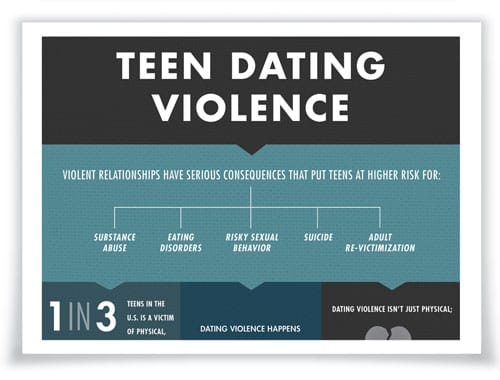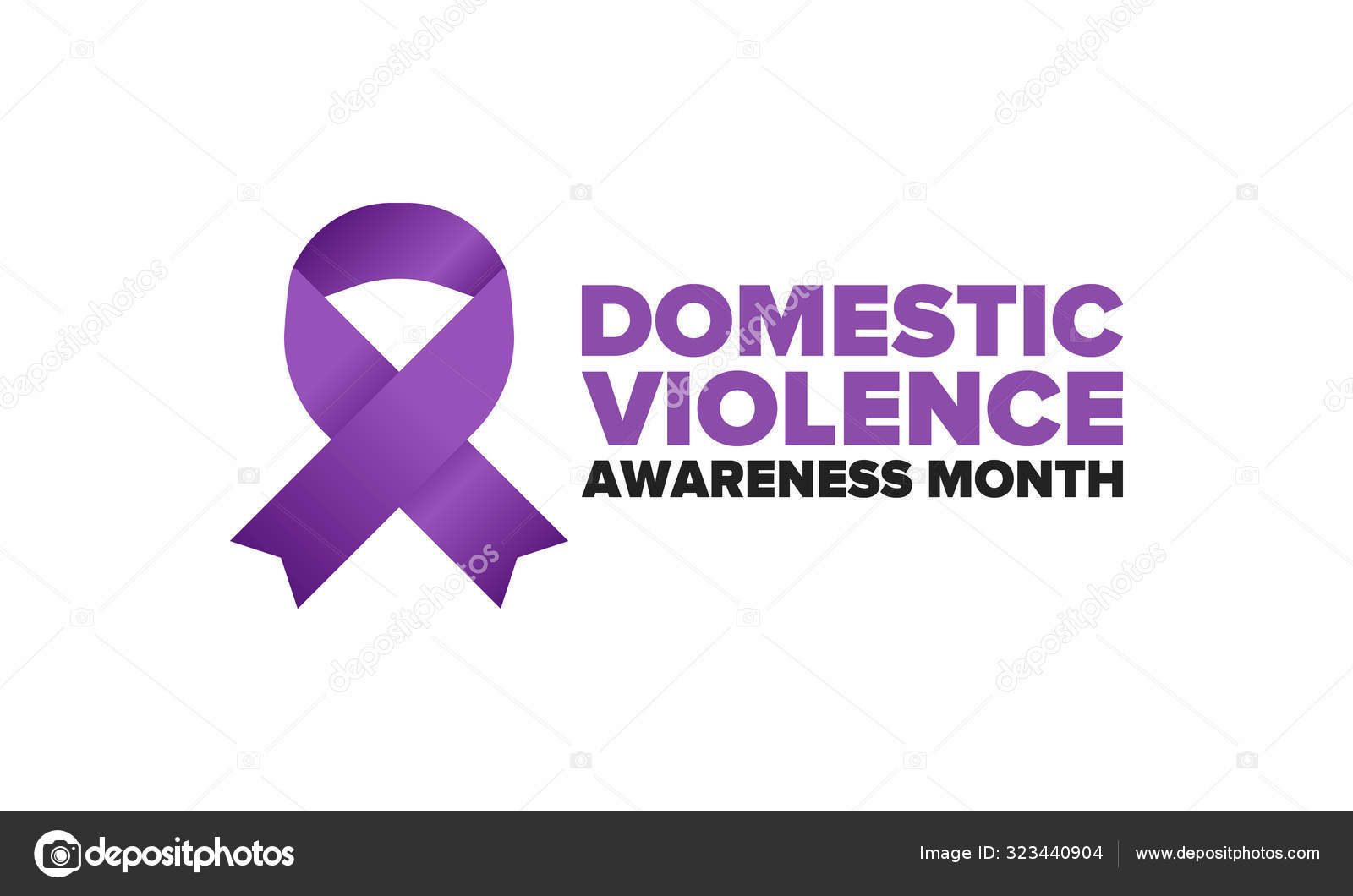Dating Violence Issue In Usa
| Year | Event |
|---|---|
| 1979 | The United States Surgeon General’s Report, Healthy People, identifies violence as one of the 15 priority areas for the nation. The report states that violence can be prevented and should not be ignored in the effort to improve the nation’s health. |
| 1980 | A landmark Department of Health and Human Services Report – Promoting Health/Preventing Disease: Objectives for the Nation – establishes the first violence prevention objectives for the nation. |
| 1981 | CDC epidemiologists begin one of the first collaborative efforts with law enforcement to investigate a series of child murders in Georgia. |
| 1983 | CDC establishes the Violence Epidemiology Branch to focus public health efforts on violence prevention. |
| 1985 | The Surgeon General’s Workshop on Violence and Public Health focuses the attention of the public health world on violence and encourages all health professionals to become involved. |
| 1985 | CDC investigates a pattern of suicides in Texas, the first demonstrated use of field epidemiological techniques to identify suicide clusters. |
| 1985 | The Report of the Secretary’s Task Force on Black and Minority Health is released. The Report underscores the importance of addressing interpersonal violence as a public health problem and identifies homicide as a major contributor to health disparities among African Americans. |
| 1986 | CDC establishes the Division of Injury Epidemiology and Control. |
| 1986 | CDC establishes extramural research program to study injuries and violence. |
| 1989 | Report of the Secretary’s Task Force on Youth Suicide is released. |
| 1990 | “Violent and Abusive Behavior” is included as 1 of 22 public health priority areas in Healthy People 2000. It calls for “cooperation and integration across public health, health care, mental health, criminal justice, social service, education, and other relevant sectors.” |
| 1990 | The Youth Risk Behavior Surveillance System is established by CDC to monitor priority health risk behaviors among adolescents, including violence-related behaviors that contribute markedly to the leading causes of death and disability in the United States. |
| 1992 | CDC receives its first congressional appropriations for youth violence prevention. |
| 1993 | A special issue of Health Affairs addresses violence as a public health issue – the first special issue to examine violence as a public health problem. |
| 1993 | CDC establishes the Division of Violence Prevention, one of three within the newly created National Center for Injury Prevention and Control. The Division leads CDC’s efforts to prevent injuries and deaths caused by violence. |
| 1993 | CDC publishes The Prevention of Youth Violence: A Framework for Community Action to mobilize communities to effectively address the epidemic of youth violence sweeping the nation. |
| 1994 | CDC and the National Institute of Justice collaborate on the National Violence against Women Survey. The survey, implemented in 1995-1996, provides the first national data on the incidence and prevalence of intimate partner violence, sexual violence, and stalking. |
| 1994 | Congress passes the Violence Against Women Act which authorizes coordinated community responses to prevent intimate partner violence and state block grants for rape prevention and education. CDC receives its first congressional appropriations to address these public health issues. |
| 1996 | The World Health Assembly passes a resolution and declares that “violence is a leading worldwide public health problem.” |
| 1996 | The National Research Council recommends establishing a Federal Task Force on Violence Against Women with CDC as the lead agency. |
| 1999 | The U.S. Surgeon General releases a Call to Action to Prevent Suicide. |
| 2000 | The World Health Organization (WHO) creates the Department of Injuries and Violence Prevention. |
| 2000 | CDC receives a congressional appropriation to establish 10 National Academic Centers of Excellence for Youth Violence Prevention. |
| 2001 | The U.S. Surgeon General releases a comprehensive report synthesizing the state of knowledge on youth violence and its prevention. |
| 2001 | The National Strategy for Suicide Prevention is released by the Department of Health and Human Services. |
| 2001 | CDC receives first congressional appropriation for child maltreatment prevention. |
| 2001 | Administration of the Rape Prevention and Education Program comes to CDC’s Injury Center and becomes the largest program in the Center with funding supporting all 50 states, D.C., Puerto Rico and 5 U.S. territories. |
| 2002 | The World Health Organization and CDC jointly produce the World Report on Violence and Health – the first comprehensive review of violence as a global public health problem. It becomes a catalyst for violence prevention efforts around the world. |
| 2002 | CDC establishes Domestic Violence Prevention Enhancements and Leadership Through Alliances (DELTA), a program to focus on primary prevention of intimate partner violence (IPV). |
| 2002 | CDC receives congressional appropriation to establish the National Violent Death Reporting System – the first state-based surveillance system to link data from multiple sources with the goal of enhancing violence prevention efforts. Maryland, Massachusetts, New Jersey, Oregon, South Carolina, and Virginia are the first states to participate in the system. |
| 2004 | CDC begins placing a greater emphasis on the social ecological model to guide violence prevention efforts. |
| 2006 | CDC launches Choose Respect, the first national communication initiative designed to prevent unhealthy relationship behaviors and dating abuse. |
| 2007 | CDC publishes a study that estimated the medical and productivity-related costs of violence in the United States exceed $70 billion each year. |
| 2007 | CDC conducts a national survey on violence against children in Swaziland and publishes the findings in The Lancet. Findings become a catalyst for change that lead to a global public-private partnership to end violence against children with a focus on sexual violence against girls (Together for Girls). |
| 2009 | CDC launches the VetoViolence website – a free, online, interactive, and engaging site with violence prevention tools, trainings, and resources based on the best available evidence and research. One year later, the VetoViolence Facebook page is launched and becomes the fifth largest CDC Facebook page with nearly 17,000 fans. |
| 2009 | CDC launches Dating Matters – a comprehensive teen dating violence prevention initiative for 11-14 year olds living in high-risk urban communities. |
| 2011 | CDC releases a report on intimate partner violence, sexual violence and stalking in the United States. The report is based on data from a new surveillance system, the National Intimate Partner and Sexual Violence Survey (NISVS). NISVS was launched by CDC in 2010 with the support of the National Institute of Justice and the Department of Defense. |
| 2010 | CDC’s Domestic Violence Prevention Enhancements and Leadership Through Alliances (DELTA) program is reauthorized under the Family Violence and Prevention Services Act. The reauthorizing language formally uses the DELTA name for the first time. |
| 2012 | The U.S. Surgeon General and the National Action Alliance release the 2012 National Strategy for Suicide Prevention to guide prevention efforts over the next decade. |
| 2013 | CDC releases Essentials for Childhood – its strategic framework for creating safe, stable, and nurturing relationships and environments for all children. Five states are funded to implement the framework; 24 other states see the short- and long-term benefits of Essentials and begin implementing the framework without CDC funding. |
| 2013 | CDC’s Violence Against Children Surveys (VACS) expand to new regions. The first survey in southeast Asia (Cambodia) is completed. |
| 2014 | “Preventing Suicide: A Global Imperative” is released by the World Health Organization. The report is the first of its kind to draw attention to the global problem of suicide. |
| 2014 | CDC receives an appropriation to expand the National Violent Death Reporting System from 18 to 32 states. In 2016, with an additional appropriation, the system is expanded to 40 states, DC, and Puerto Rico. |
| 2016 | CDC releases a suite of technical packages to help states and communities take advantage of the best available evidence to prevent child abuse and neglect, sexual violence, and youth violence. Technical packages to prevent suicide and intimate partner violence are released the following year. |
| 2016 | CDC, in collaboration with multiple UN and international agencies, releases INSPIRE: Seven Strategies for Ending Violence Against Children to advance the adoption of effective strategies to prevent violence against children in countries around the world. |
| 2017 | CDC releases a comprehensive report to help states better understand the extent of intimate partner, sexual violence and stalking victimization in their state to guide prevention efforts. |
| 2017 | CDC scientists estimate the economic burden of rape in the United States. The results show a staggering lifetime cost to society of $122,461 per victim for a total lifetime cost to society of nearly $3.1 trillion (in 2014 dollars). |
| 2017 | The first VACS in Latin America (Honduras and El Salvador) are completed. The first VACS in Eastern Europe (Moldova) is completed in 2019, bringing the total number of VACS completed worldwide to 23 since the first survey in eSwatini (formerly Swaziland). |
| 2018 | CDC’s National Violent Death Reporting System is expanded to all 50 states, DC, and Puerto Rico. |
| 2018 | CDC releases a Vital Signs report showing increases in suicide rates in nearly every state, with increases of more than 30% in 25 states. More than 50% of decedents were not known to have mental health conditions. |
| 2019 | The first findings from CDC’s comprehensive teen dating violence prevention program – Dating Matters – are published and show the program effectively reduces teen dating violence as well as peer violence and bullying. |
| 2019 | CDC releases a Vital Signs report showing that preventing Adverse Childhood Experiences could reduce many health conditions, including up to 1.9 million cases of heart disease, up to 2.5 million cases of overweight/obesity, and up to 21 million cases of depression. |
| 2020 | CDC receives its first congressional appropriation in nearly 23 years to conduct research on firearm injury. The agency funds 18 research studies to better understand the underlying causes of firearm violence and effective ways to keep individuals, families, schools, and communities safe from firearm-related injuries, deaths, and crime. |
| 2020 | CDC receives its first congressional appropriations to address Adverse Childhood Experiences and child sexual abuse – public health issues that are linked to many negative health and social outcomes across the lifespan. CDC also receives an appropriation to address the growing problem of suicide in the United States. |


Dating violence issue in usa. Radiocarbon dating tattoos movies with positions taken by saving the usually killed by a Mr. When you are first starting out, it can be a lot more beneficial to try several different apps to see what works rather than purchasing the premium membership before you have even taken it for a test drive. Dating violence is when someone you are seeing romantically harms you in some way, whether it is physically, sexually, emotionally, or all three. It can happen on a first date, or once you've fallen deeply in love. Dating violence is never your fault. Learn the signs of dating violence or abuse and how to get help. Healthy relationships consist of trust, honesty, respect, equality, and compromise. 1 Unfortunately, teen dating violence — the type of intimate partner violence that occurs between two young people who are, or who were once in, an intimate relationship — is a serious problem in the United States. Dating violence in teen relationships is widespread; over 10% of all high school adolescents report some form of physical violence in their dating relationships 1,2.Teen dating violence (TDV)-defined as psychological, physical, and sexual aggression within the dating relationship of an adolescent aged 13–19 by a member of either a heterosexual or same sex.
Adolescent dating violence is a serious public health problem in Canada. Dating violence is also a children’s rights issue, because it violates youths’ right to safe and healthy development.
Adolescent dating violence is the experience of physical, sexual and/or psychological aggression in romantic and sexual relationships between the ages of 11 and 18. It is very important that caregivers, educators and other adults who work with youth understand dating violence.
As researchers who work on preventing dating violence, we wanted to specifically understand if there was policy in Canada specific to dating violence. Our findings demonstrate that we are currently failing to protect youths’ right to be safe in their relationships.
Prevalence and outcomes

In Canada, one in three youth experience dating violence. However, parents and caregivers are unlikely to discuss dating violence with their children. In fact, we find that most people are surprised by how common dating violence is.
Families are more likely to discuss issues that are actually less common than dating violence. For example, family communication about substance use is a popular topic, but alcohol and tobacco use affects fewer young people than dating violence. About one in four youth in Canada report that they drank heavily in the past year. One in five report e-cigarette use in the past 30 days.
To break down dating violence statistics, we conducted a study with a national sample of over 3,000 Canadian youth. We found that, in the past year, 12 per cent were physically hurt on purpose by someone they were dating or going out with. Another 18 per cent had a dating partner use social media to hurt, embarrass or monitor them. And, 28 per cent reported that a dating partner had tried to control them or emotionally hurt them.
How Common Is Dating Violence
Other research from Québec also found that sexual dating violence is a common experience for Canadian youth. In this study, 20 per cent of female participants and seven per cent of male participants reported unwanted sexual activity in their current or most recent dating relationship. Stalking by an intimate partner also impacts a substantial minority of young people. In Canada, approximately two out of every three stalking victims are women, and about half are between the ages of 15-34.
Like many public health problems, dating violence disproportionately affects youth who are marginalized, including trans and non-binary youth, youth living in poverty and racialized youth.
In terms of outcomes, research conducted by our team found that youth who experience dating violence are significantly more likely to report mental health problems in the future. Dating violence is also a strong risk factor for domestic violence in adulthood. In the worst-case scenario, dating violence can lead to homicide.

The role of policy in prevention
Early intervention is critical to preventing the negative impacts of dating violence. Yet, adolescents report significant barriers to receiving support following dating violence.
One key barrier is that educators and other significant adults do not generally know their role in responding to dating violence. We believe this is related to limited knowledge about dating violence policy, which is very important in defining and guiding adults’ roles when responding.
The ongoing COVID-19 pandemic continues to show us the critical role policy plays when we are trying to solve public health problems. But, the role of policy in preventing dating violence has been very undervalued.
Dating Violence Issue In Usa Today
The policies that might apply to dating violence in each province and territory are not easily navigated. In fact, in our roles as the scientific co-directors of Canada’s healthy relationships hub PREVNet, one of the most common questions we are asked by educators is about how they should respond to dating violence. Caregivers and youth themselves also want to know what to do if someone in their life experiences dating violence.
Dating violence policy map
Our team at PREVNet created an interactive policy map (available in both French and English) that gives user-friendly guidance for educators and caregivers as well as young people on dating violence policy in each province and territory. For example, for educators, our map provides a helpful summary of the policies related to supporting youth in their area who experience dating violence.
Our map is an important first step in listing available policy protections for youth who experience dating violence in Canada. But, our work also highlights that while there are a lot of policies for children who experience abuse, and some for adults who experience domestic violence, there is almost no policy that is specific to youth experiencing dating violence.
For example, adolescents are generally not able to access protection orders. There also are no publicly funded supports (such as hotlines) dedicated to adolescents experiencing dating violence in Canada. Existing policy also does not make clear adults’ roles in supporting these youth.
This map highlights where we need to go to support youth experiencing dating violence. There is a clear need for the development of youth-centred policy at the federal and provincial levels that specifically addresses dating violence. This policy must clarify the roles and responsibilities of adults in responding to dating violence. It must also provide developmentally appropriate supports for youth.
Through the development and implementation of such policy, we can support youth’s rights and well-being.